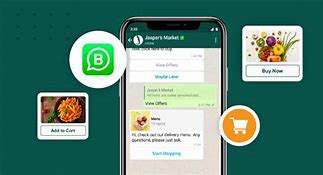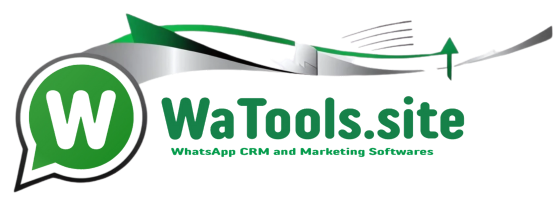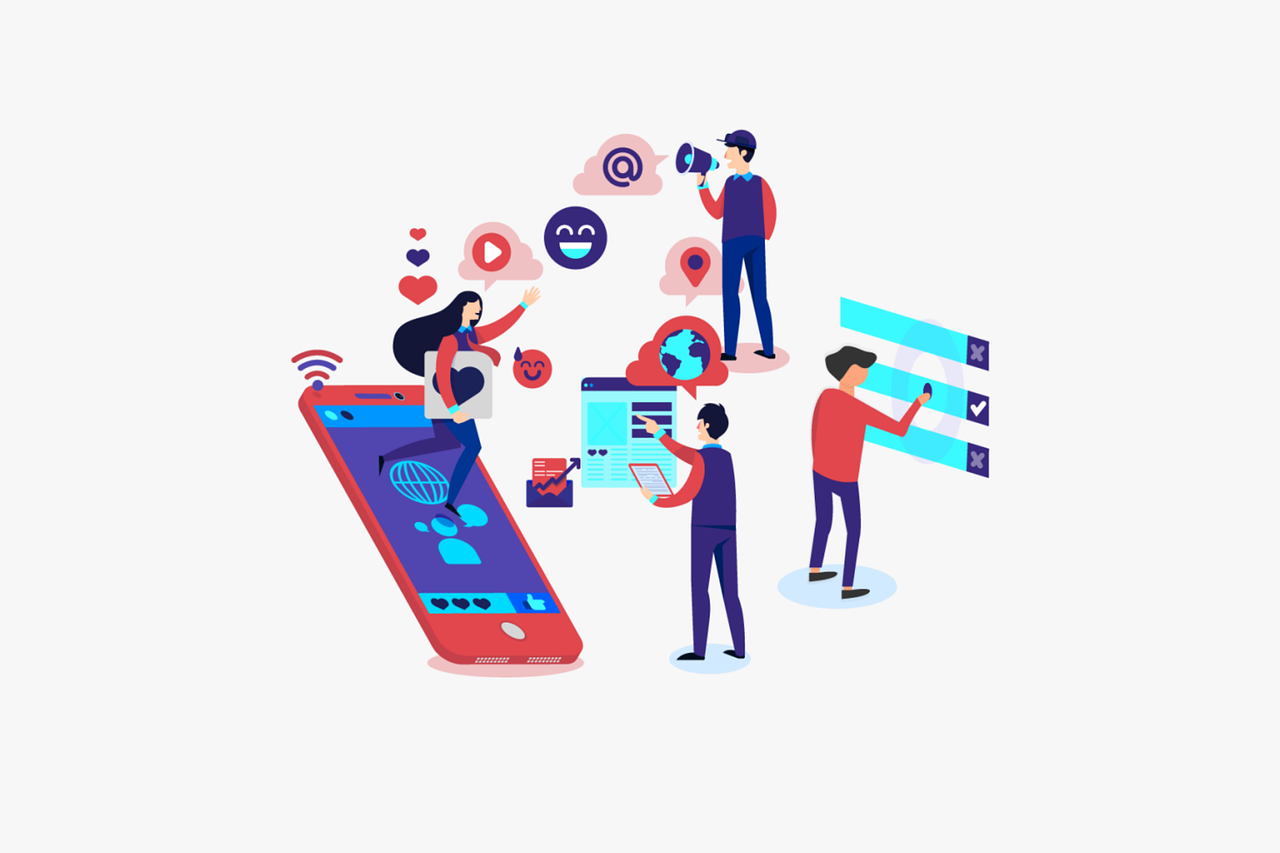In today's digital marketing landscape, WhatsApp has emerged as one of the most powerful platforms for businesses to connect with customers, drive engagement, and boost sales. With over 2 billion active users worldwide and a staggering 98% open rate for messages, WhatsApp offers unparalleled reach and engagement potential compared to traditional marketing channels.
However, simply having a WhatsApp Business account isn't enough. To truly leverage the platform's potential, you need strategic approaches that align with your business goals while respecting user privacy and platform guidelines. In this comprehensive guide, we'll explore 10 proven WhatsApp marketing strategies that can transform your customer relationships and drive significant business growth in 2025.
Whether you're a small business owner just getting started with WhatsApp marketing or a marketing professional looking to optimize your existing WhatsApp strategy, these actionable insights and real-world examples will help you achieve measurable results.
Why WhatsApp Marketing Matters in 2025
Before diving into specific strategies, let's understand why WhatsApp has become such a crucial marketing channel:
- Unmatched engagement: WhatsApp messages have an average open rate of 98%, compared to just 20% for email marketing
- Direct communication: Messages go straight to customers' personal devices, creating immediate visibility
- Rich media capabilities: Share images, videos, documents, and interactive content
- End-to-end encryption: Builds trust with privacy-conscious consumers
- Global reach: Available in over 180 countries and 60 languages
- Business-friendly features: WhatsApp Business API offers advanced tools for customer service and marketing
With these advantages in mind, let's explore the 10 most effective WhatsApp marketing strategies for business growth.
Strategy #1: Build a Quality Opt-in Contact Database
The foundation of successful WhatsApp marketing is a high-quality database of contacts who have explicitly opted in to receive your messages. Unlike traditional SMS or email marketing, WhatsApp has strict anti-spam policies, making proper opt-in procedures essential.
Implementation steps:
- Create compelling opt-in incentives: Offer exclusive content, discounts, or early access to new products
- Implement multi-channel opt-in opportunities: Website forms, social media, in-store signage, and checkout processes
- Use clear permission language: Explicitly state what types of messages customers will receive and how often
- Implement double opt-in: Send a confirmation message requiring a response before adding to your marketing list
- Segment your database: Categorize contacts based on interests, purchase history, and engagement level
Example opt-in message:
"Thank you for joining [Your Brand]'s WhatsApp updates! Reply YES to receive exclusive offers, product updates, and personalized recommendations (max 4 msgs/month). You can unsubscribe anytime by replying STOP."
Pro Tip
When collecting WhatsApp opt-ins, ask for additional preference information to enable better segmentation from the start. For example, ask customers to indicate their product interests or preferred message frequency. This data will help you create more targeted and relevant messaging campaigns.
Strategy #2: Create a Content Calendar for Consistent Engagement
Consistency is key to maintaining engagement on WhatsApp. A well-planned content calendar ensures regular communication without overwhelming your audience, while also aligning your WhatsApp marketing with broader business objectives and seasonal opportunities.
Implementation steps:
- Define optimal messaging frequency: Based on your industry and audience preferences (typically 1-4 times per month)
- Plan content themes: Product updates, educational content, promotions, customer spotlights, etc.
- Align with business events: Product launches, seasonal promotions, industry events
- Create message templates: Develop and pre-approve message templates for different content types
- Schedule strategic send times: Analyze when your audience is most responsive
Sample monthly content calendar structure:
- Week 1: Educational content (tips, how-tos, industry insights)
- Week 2: Product spotlight or new release announcement
- Week 3: Customer success story or testimonial
- Week 4: Exclusive offer or promotion
Strategy #3: Leverage WhatsApp Broadcast Lists for Targeted Messaging
WhatsApp Broadcast Lists allow you to send messages to multiple recipients simultaneously while maintaining the personal feel of individual communication. Each recipient receives the message as if it was sent to them personally, increasing the perception of personalized service.
Implementation steps:
- Create segmented broadcast lists: Group contacts based on shared characteristics (max 256 contacts per list)
- Develop segment-specific content: Tailor messages to each segment's interests and needs
- Test optimal send times: Experiment with different days and times to maximize engagement
- Monitor delivery and read receipts: Track which messages are being delivered and read
- Analyze response patterns: Identify which content types generate the most engagement
Effective broadcast list segments:
- New customers vs. loyal customers
- Product category interests
- Purchase frequency or value
- Geographic location
- Previous engagement level
For businesses requiring more advanced broadcasting capabilities, the WhatsApp Business API offers expanded functionality:
- Send to unlimited contacts (subject to quality ratings)
- Advanced message templates with variables for personalization
- Detailed analytics on delivery, open rates, and responses
- Integration with CRM systems for automated segmentation
Strategy #4: Implement Conversational Commerce for Direct Sales
Conversational commerce—the intersection of messaging apps and shopping—allows customers to make purchases directly through WhatsApp conversations. This streamlined approach reduces friction in the buying process and can significantly increase conversion rates.
Implementation steps:
- Create a product catalog: Showcase products with images, descriptions, and prices
- Develop guided shopping flows: Help customers find products through conversational questions
- Implement secure payment options: Integrate with payment solutions compatible with WhatsApp
- Train staff on conversational selling: Develop scripts and guidelines for sales conversations
- Set up order confirmation and tracking: Keep customers informed throughout the purchase journey
Conversational commerce best practices:
- Keep product presentations concise and visual
- Use numbered options to simplify customer choices
- Provide clear calls-to-action at each step
- Offer personalized product recommendations
- Follow up on abandoned conversations
Case Study: Fashion Retailer Boosts Sales with WhatsApp Conversational Commerce
A mid-sized fashion retailer implemented a WhatsApp conversational commerce strategy, allowing customers to browse collections, receive personalized style advice, and complete purchases entirely within WhatsApp.
Their approach included:
- Visual product catalogs organized by collection
- Style quizzes to determine customer preferences
- Personal shoppers available for real-time advice
- Secure payment processing through integrated links
- Post-purchase styling tips and outfit suggestions
Conversion Rate
37%
Increase compared to website
Average Order Value
+28%
Higher than other channels
Customer Satisfaction
4.8/5
Based on post-purchase surveys
Repeat Purchase Rate
+42%
Within 60 days
Strategy #5: Develop a WhatsApp Chatbot for 24/7 Customer Engagement
AI-powered chatbots can handle routine customer inquiries, product recommendations, and even sales processes around the clock, providing immediate responses while reducing operational costs.
Implementation steps:
- Identify automation opportunities: Map common customer inquiries and interactions
- Choose a chatbot development approach: No-code platforms, third-party solutions, or custom development
- Design conversation flows: Create logical pathways for different customer needs
- Implement natural language processing: Enable the bot to understand various question phrasings
- Create clear escalation paths: Define when and how to transfer to human agents
- Test extensively: Ensure the bot handles various scenarios correctly
Effective chatbot use cases:
- Product recommendations based on customer preferences
- Order status tracking and updates
- Appointment scheduling and reminders
- FAQ and knowledge base searches
- Lead qualification and data collection
- Simple troubleshooting guidance
Pro Tip
When designing your WhatsApp chatbot, focus on creating a "hybrid" experience that combines automation with human touch. Program your bot to recognize when a customer is frustrated or when a query is too complex, and have it proactively offer to connect the customer with a human agent. This approach maximizes efficiency while ensuring customer satisfaction.
Strategy #6: Create Interactive Campaigns with Rich Media
WhatsApp supports various media types, allowing you to create engaging, interactive campaigns that drive higher engagement than text-only messages. Rich media can showcase products, explain concepts, or evoke emotional responses more effectively.
Implementation steps:
- Develop a visual style guide: Ensure consistent branding across all media
- Create a library of media assets: Product images, how-to videos, infographics, etc.
- Design interactive elements: Polls, quizzes, challenges, or contests
- Optimize media for mobile viewing: Consider file size, dimensions, and loading time
- Test engagement across different media types: Identify which formats resonate best
Effective rich media content types:
- Product demonstration videos: Show products in action (30-60 seconds)
- Before/after images: Visualize results or transformations
- Infographics: Present data or processes in visual format
- Tutorial GIFs: Demonstrate simple procedures in looping animations
- Voice messages: Add a personal touch with audio explanations
- PDF catalogs or guides: Provide detailed information in downloadable format
When creating rich media content for WhatsApp, keep these technical specifications in mind:
- Images: JPEG or PNG format, max 16MB
- Videos: MP4 format, max 16MB (approximately 90 seconds of HD video)
- Audio: MP3, AAC, M4A, OPUS, max 16MB
- Documents: PDF, DOC, DOCX, XLS, XLSX, max 100MB
Strategy #7: Implement Personalized Automated Flows
Automated message sequences triggered by specific customer actions or milestones can deliver highly relevant content at the perfect moment, increasing engagement and conversion rates while maintaining a personal touch.
Implementation steps:
- Identify key customer journey touchpoints: Map moments where automated messages add value
- Design message sequences: Create logical flows with appropriate timing
- Incorporate personalization variables: Name, purchase history, preferences, etc.
- Set up trigger conditions: Define what actions or events initiate each sequence
- Implement tracking and analytics: Monitor performance of each automated flow
Effective automated flow examples:
- Welcome sequence: Introduction, onboarding, initial offer
- Post-purchase sequence: Order confirmation, shipping updates, usage tips, review request
- Re-engagement sequence: Reminder messages for inactive customers
- Birthday/anniversary sequence: Personalized greetings and special offers
- Abandoned cart sequence: Reminders about products left in shopping cart
- Educational sequence: Series of tips or lessons delivered over time
Strategy #8: Leverage WhatsApp Status for Brand Storytelling
WhatsApp Status—the platform's version of Stories—allows businesses to share ephemeral content that disappears after 24 hours. This feature is perfect for time-sensitive announcements, behind-the-scenes content, and creating a sense of urgency.
Implementation steps:
- Create a Status content strategy: Define themes and content types
- Develop a posting schedule: Determine optimal frequency and timing
- Design mobile-first visual content: Optimize for vertical viewing
- Include clear calls-to-action: Direct viewers to take specific next steps
- Track Status views: Monitor which content generates the most interest
Effective WhatsApp Status content ideas:
- Flash sales or limited-time offers
- Product teasers or launch countdowns
- Quick tips or life hacks related to your products
- Behind-the-scenes glimpses of your business
- User-generated content or customer testimonials
- Day-in-the-life content featuring team members
Pro Tip
To maximize the impact of your WhatsApp Status updates, create a sense of exclusivity by offering "Status-only" promotions or information. Announce that certain deals or insights will only be shared via Status, encouraging customers to regularly check your updates. This approach can significantly increase Status views and overall engagement with your WhatsApp presence.
Strategy #9: Implement WhatsApp Groups for Community Building
WhatsApp Groups can foster community among your customers, creating spaces for discussion, feedback, and peer-to-peer recommendations. These communities can strengthen brand loyalty and provide valuable insights into customer preferences and pain points.
Implementation steps:
- Define group purpose and guidelines: Establish clear objectives and rules
- Create themed groups: Organize around specific interests or customer segments
- Develop a content and moderation plan: Schedule regular updates and discussion prompts
- Appoint community managers: Assign staff to facilitate conversations
- Monitor engagement and sentiment: Track participation and feedback
Effective WhatsApp Group ideas:
- VIP customer groups with exclusive benefits
- Product-specific user communities for tips and troubleshooting
- Interest-based groups aligned with your brand values
- Beta testing groups for new product feedback
- Local customer groups organized by geography
- Event-specific groups for attendees
When managing WhatsApp Groups, keep these best practices in mind:
- Limit group size to maintain quality conversations (max 256 members per group)
- Set clear expectations about message frequency and content
- Create a balance between brand messages and community discussions
- Address inappropriate behavior promptly and consistently
- Recognize and reward active, positive contributors
Strategy #10: Integrate WhatsApp with Your Overall Marketing Ecosystem
For maximum impact, WhatsApp marketing should be integrated with your broader marketing ecosystem, creating seamless customer experiences across channels and leveraging data for more personalized interactions.
Implementation steps:
- Connect WhatsApp with your CRM system: Centralize customer data and interaction history
- Implement cross-channel campaign tracking: Monitor customer journeys across touchpoints
- Create consistent messaging across platforms: Align WhatsApp content with other channels
- Develop channel transition strategies: Guide customers between channels as appropriate
- Implement unified analytics: Measure performance across all marketing channels
Effective integration strategies:
- Use email marketing to promote WhatsApp opt-ins
- Add WhatsApp chat buttons to your website and landing pages
- Promote WhatsApp as a customer service channel on social media
- Include WhatsApp QR codes on product packaging and print materials
- Use WhatsApp for post-purchase follow-up after website transactions
- Implement WhatsApp click-to-chat ads on Facebook and Instagram
Case Study: E-commerce Brand Achieves 43% Growth Through Integrated WhatsApp Marketing
An e-commerce brand selling home goods implemented a comprehensive WhatsApp marketing strategy integrated with their overall marketing ecosystem. Their approach included:
- CRM integration for personalized messaging based on purchase history
- Automated post-purchase flows with order updates and product care tips
- WhatsApp chatbot for 24/7 customer support and product recommendations
- Exclusive WhatsApp-only flash sales announced via Status
- Product-specific community groups for customers to share ideas
- WhatsApp click-to-chat ads targeting abandoned cart customers
Revenue Growth
43%
Year-over-year increase
Customer Retention
+38%
Improvement in repeat purchase rate
Support Costs
-32%
Reduction through automation
Marketing ROI
4.7x
Return on WhatsApp investment
Measuring WhatsApp Marketing Success: Key Metrics to Track
To optimize your WhatsApp marketing strategy, it's essential to track the right metrics and use data to inform your decisions. Here are the most important metrics to monitor:
Engagement Metrics
- Open Rate: Percentage of messages that are read by recipients
- Response Rate: Percentage of messages that receive a reply
- Click-Through Rate (CTR): Percentage of recipients who click on links in your messages
- Media View Rate: Percentage of recipients who view attached media
- Status View Rate: Number of customers viewing your WhatsApp Status updates
Conversion Metrics
- Conversion Rate: Percentage of recipients who complete desired actions
- Cost Per Conversion: Total WhatsApp marketing cost divided by number of conversions
- Average Order Value: Average purchase amount from WhatsApp-driven sales
- Revenue Attribution: Total revenue generated from WhatsApp marketing
Customer Service Metrics
- First Response Time: Average time to first reply to customer inquiries
- Resolution Time: Average time to resolve customer issues
- Customer Satisfaction Score: Feedback ratings on WhatsApp interactions
- Issue Resolution Rate: Percentage of inquiries resolved via WhatsApp
Growth Metrics
- Opt-in Rate: Percentage of customers who agree to receive WhatsApp messages
- List Growth Rate: Net percentage increase in WhatsApp contacts over time
- Opt-out Rate: Percentage of recipients who unsubscribe
- Referral Rate: Number of new contacts gained through existing customer referrals

Transform Your WhatsApp Marketing with WATools
WATools provides a comprehensive solution for implementing all 10 WhatsApp marketing strategies discussed in this article. Our platform offers advanced features for contact management, automated messaging, chatbots, analytics, and seamless CRM integration—everything you need to drive business growth through WhatsApp marketing.
Start Your Free Trial TodayWhatsApp Marketing Compliance and Best Practices
As you implement these WhatsApp marketing strategies, it's crucial to maintain compliance with platform policies and regulations while following best practices for user experience:
Compliance Requirements
- Explicit opt-in: Always obtain clear permission before sending marketing messages
- Privacy policy: Maintain a clear, accessible privacy policy explaining data usage
- Opt-out mechanism: Provide an easy way for recipients to unsubscribe
- Message templates: When using the Business API, get templates pre-approved
- Content restrictions: Avoid prohibited content categories (gambling, adult content, etc.)
- Regional regulations: Comply with local laws like GDPR, CCPA, and LGPD
User Experience Best Practices
- Respect messaging frequency: Don't overwhelm recipients with too many messages
- Provide value in every message: Ensure each communication offers clear benefits
- Personalize when possible: Use available data to tailor messages to individual recipients
- Be responsive: Reply promptly to customer inquiries
- Maintain brand voice: Keep messaging consistent with your overall brand identity
- Test before scaling: Pilot new approaches with smaller segments before full deployment
Conclusion: Building a Sustainable WhatsApp Marketing Strategy
WhatsApp marketing offers unprecedented opportunities for businesses to connect with customers in personal, meaningful ways that drive engagement and growth. By implementing the 10 strategies outlined in this guide, you can create a WhatsApp marketing approach that delivers measurable results while building stronger customer relationships.
The most successful WhatsApp marketing strategies share common characteristics:
- Customer-centric: Focused on providing value rather than just promoting products
- Permission-based: Built on explicit consent and respect for user preferences
- Data-driven: Continuously optimized based on performance metrics
- Integrated: Connected with broader marketing and business systems
- Balanced: Combining automation with human touch when appropriate
As WhatsApp continues to evolve its business features, staying current with platform capabilities and best practices will be essential for maintaining competitive advantage. By partnering with WATools, you gain access to cutting-edge WhatsApp marketing tools and expertise that can help you implement these strategies effectively and adapt to future changes in the platform.
Start implementing these proven WhatsApp marketing strategies today, and watch your business grow through more meaningful customer connections and more effective marketing communications.


